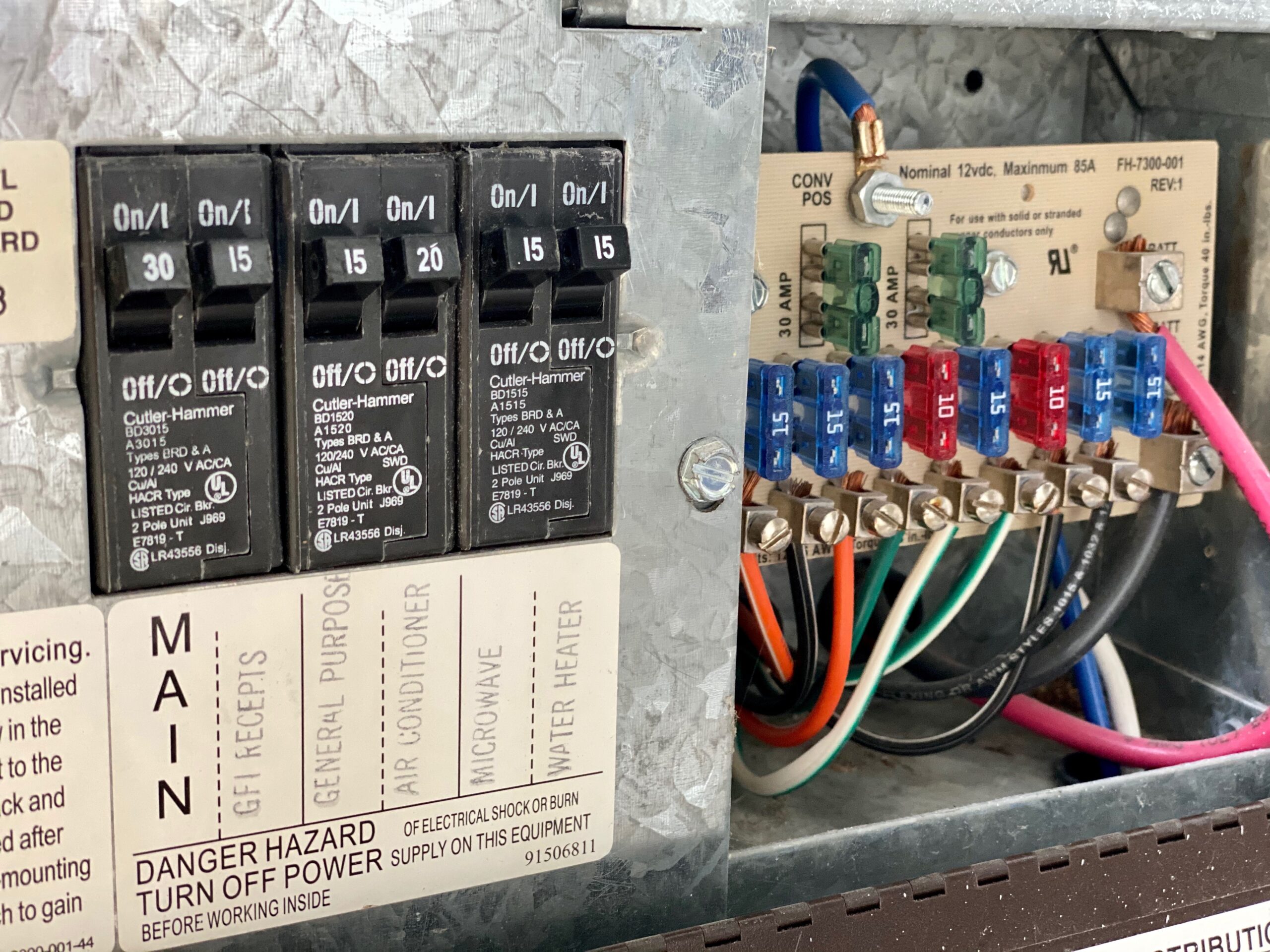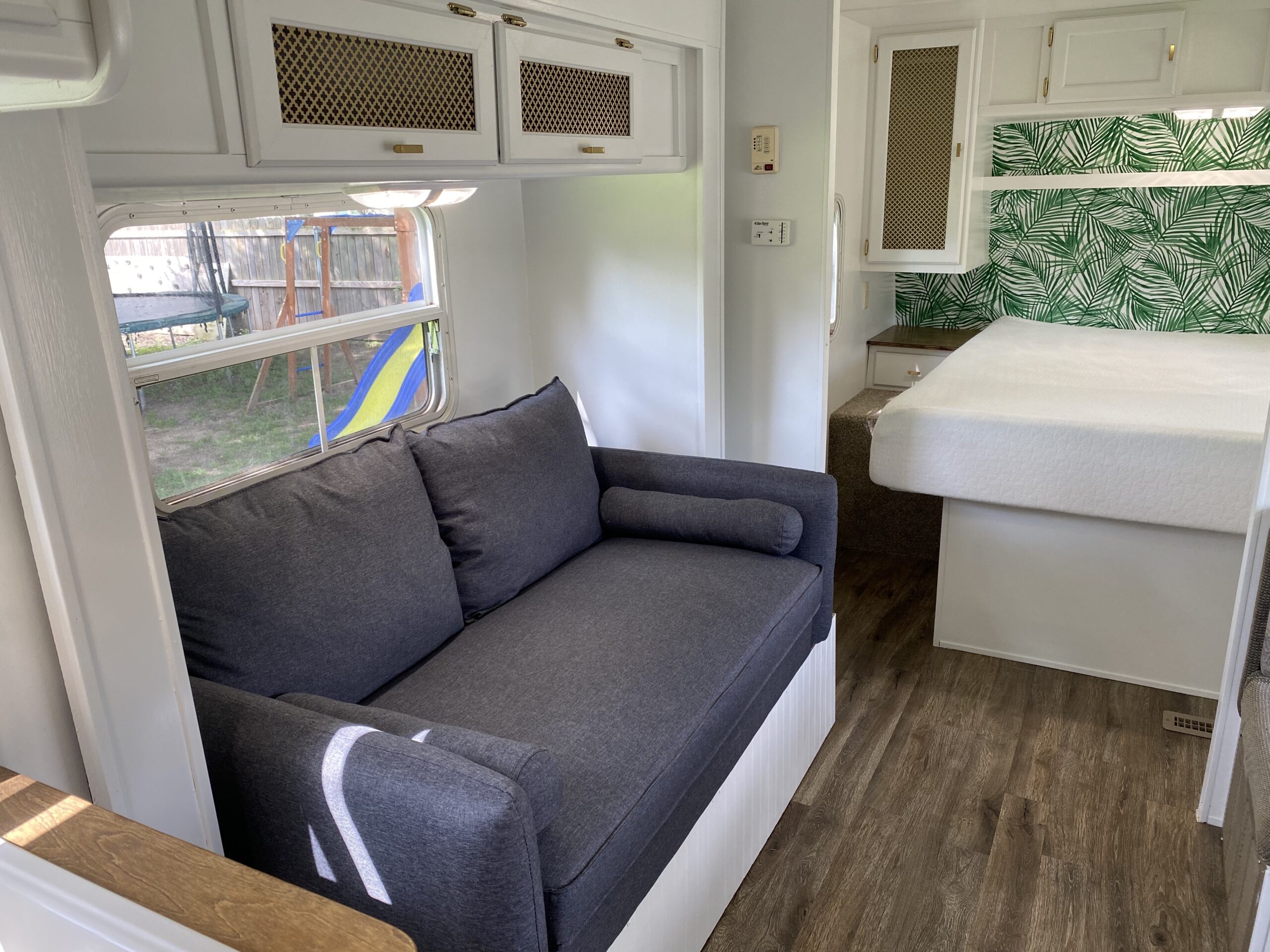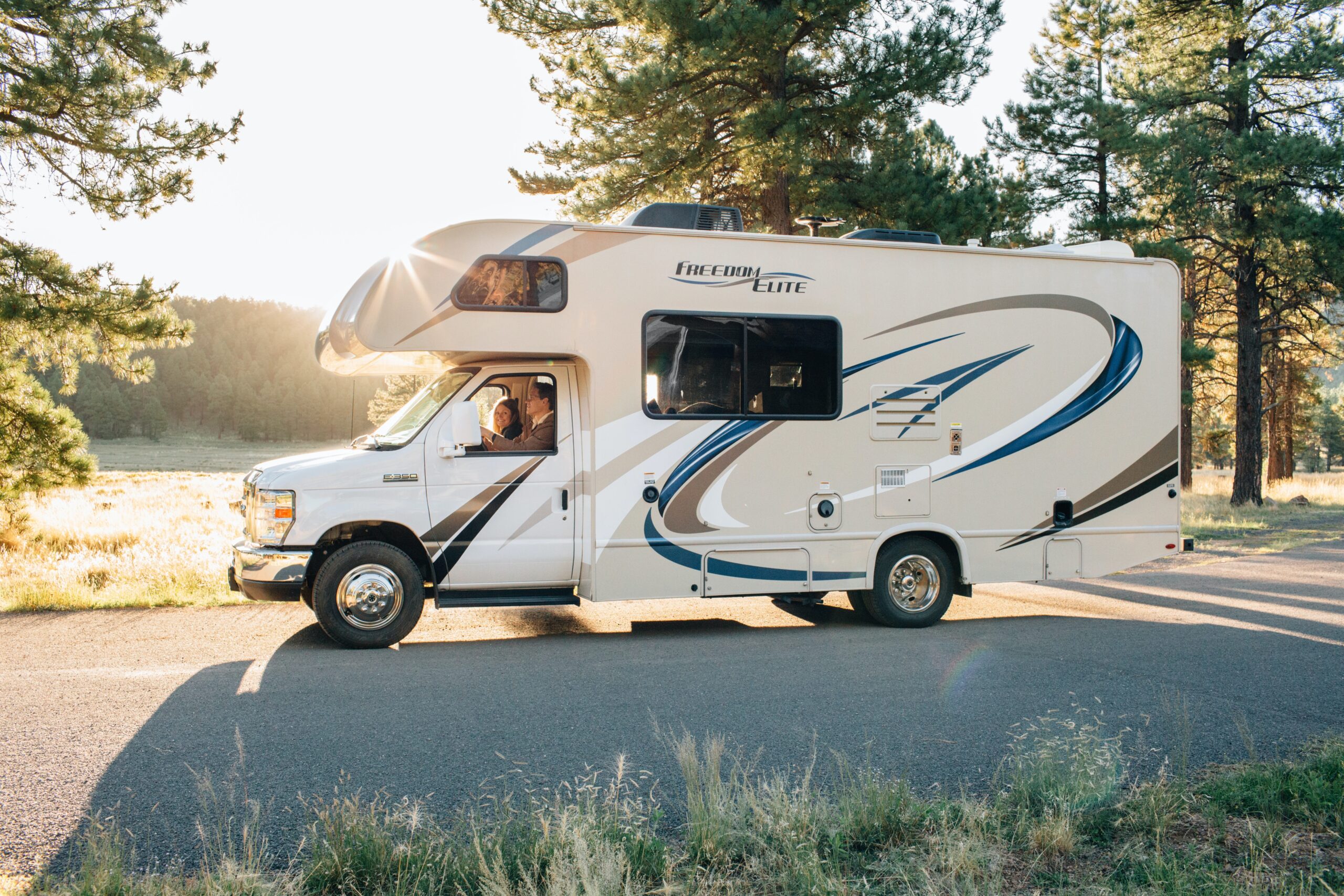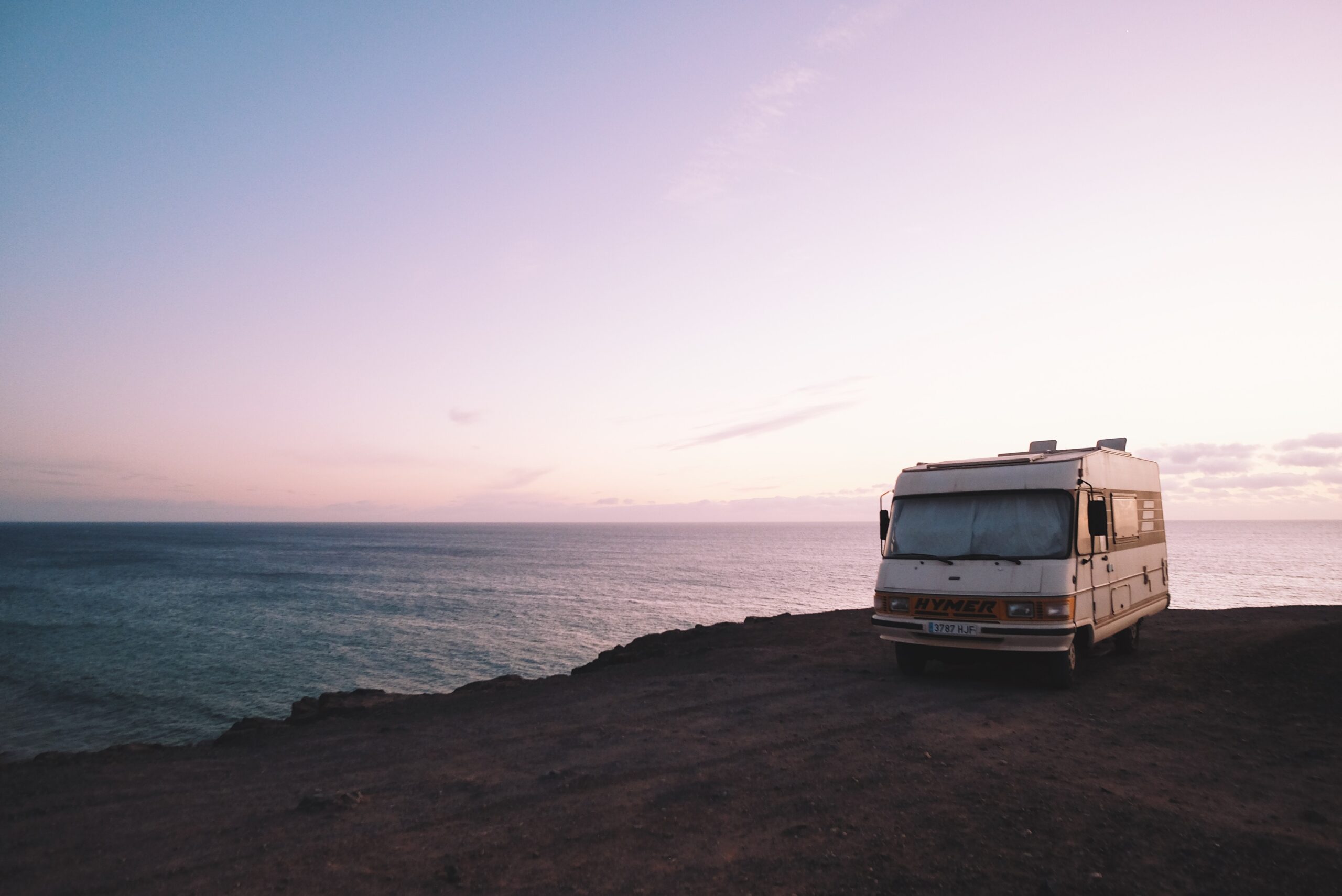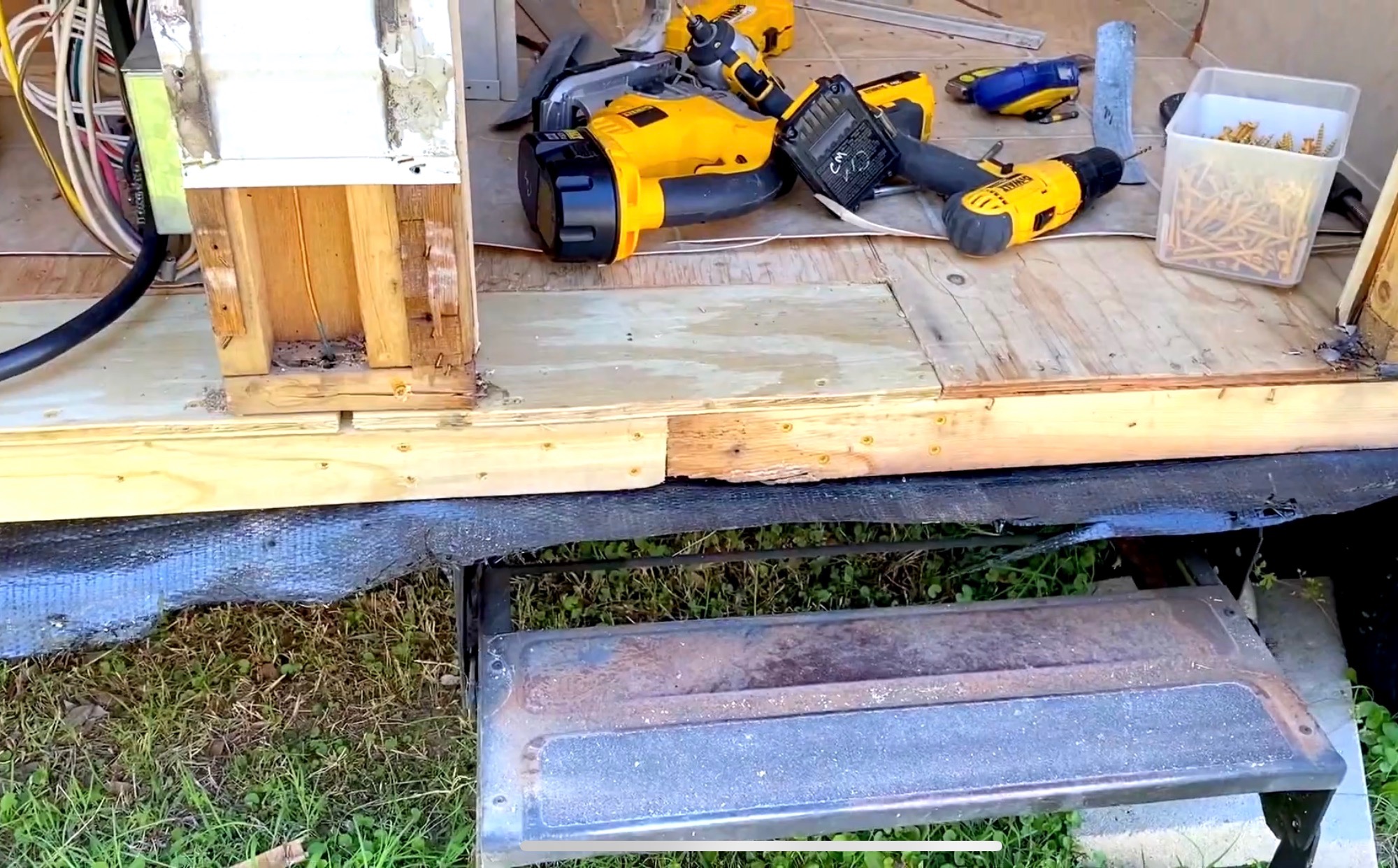Turns out, it is a bit more complex than that. AC/DC stands for alternating current and direct current. It is the combination of these two currents that provide the electricity to your RV.
Depending on what you are trying to power in your RV, you will need an inverter (some RVs come stock with one). The power inverter will transform lower voltage electricity (DC) into high voltage electricity (AC) and allow you to power larger appliances.
RV Converter vs. Inverter

The power converter in your rig changes the AC power to DC power. When you are plugged in with full hook-ups, the converter is going to take that 120-volt power and change it to 12-volt power in order to provide electricity the basic electronics in your RV. It will also send power to your battery in order to recharge it.
An inverter essentially does the opposite of that. When you are running solely off your battery or solar panels, a power inverter will transform the 12-volt power into 120-volt power in order to send it to electronics that need it.
Most of the items in your RV can be powered off low voltage DC power. However, other residential appliances will need some extra ‘oomph’ to run properly.
What Exactly Can My Inverter Power?

Some of the electronics in your RV can simply be run straight off DC power from the battery (or solar power if you have panels installed). These include:
- Bathroom & kitchen vent fans
- Water pump
- Smoke & carbon monoxide detectors
However, other appliances that require higher voltage will need the assistance of an inverter to work properly with AC power. Some examples are:
- Microwaves
- Air conditioners
- Televisions
Is an Inverter Actually Necessary?
Each individual person will need to determine if a supplementary inverter is necessary for them based on their RV style and lifestyle choices.
If you’re prone to perfectly controlled interior temperatures, microwave popcorn and movies on the TV after a long drive, then you’ll mostly definitely want to invest an inverter. That is, if your RV or camper doesn’t already come with one.
On the other hand, if your camping style is more basic, then an inverter that powers larger, luxury appliances may not be entirely necessary.
Types of Inverters
When purchasing a new inverter or upgrading an old one, there are a few important elements to think about. In general, there are three types of inverters: square wave, sine wave and modified sine wave inverters.
- Square Wave Inverters: These inverters or older and a bit outdated. However, depending on your budget and what you are trying to power, this type of inverter could be all that you need. They are normally cheaper and good for powering smaller appliances.
- Sine Wave Inverters: These are the more common inverter nowadays. They sometimes are called pure sine inverters or true sine wave inverters. These tend to be the strongest and most advanced inverter. They provide quality power output and work with most types of appliances. However, they tend to be a bit more expensive.
- Modified Sine Wave Inverters: These inverters can also power most of your devices and appliances. They tend to be much less expensive than pure sine wave inverters. However, they tend to consume more battery power (not a problem if you’re plugged into shore power) and do not put out as much power.
The type of inverter that you choose will need to match your lifestyle and the types of electronics you are trying to power. There are plenty of options at a myriad of price points to fit your needs and keep you powered up on the go.
Other Important Details
The size of your inverter is also important to consider. Some of the more powerful and expensive inverters are large and heavy. You will want to think about the space that you have available and where your inverter can be stored.
The storage location of your inverter is important because it will determine if you need to invest in an inverter with remote control or not. If the inverter is stored conveniently, using the manual power switch will be no problem.
But if you want it hidden away, choosing an inverter that has a remote control in order to turn it on and off will be a necessity.
Modern power inverters can also come with important safety features. The largest problem inverters run into is overheating. RV inverters produce a lot of heat while they run so it is vital to find one with a cooling fan.
Other safety features worth considering are: power overload protection, an under-voltage alarm and over-voltage alarm, short circuit prevention and surge protection.
Price is another important detail. The price tag is normally based off the power output of the inverter. But these types of features will also impact the price of the inverter.
Spending more money on more power may not be necessary. Consider the appliances you use and your expected power usage to find the correct inverter.
Money Talks
RV inverters come in a wide array of price points. There is something for everyone based on their budget and power considerations.
The most budgets inverters can be found for less than $150. These will have less power output and and fewer advanced features compared to more expensive models.
But if you’re just trying to keep your laptop charged while working remotely, this might be the right price point for you.
The next step up would be between $150 and $300. Some of the most reliable inverters can be found at this price point. They provide lots of power and include some important additional features. These would be ideal for most an RV travel and basic household appliances.
Over $300 is where you start getting into the most premium models of inverters. Inverters with this price tag are almost always pure sine wave inverters.
They will have the ability to power your entire RV or camper. They will also include some of those important features we talked about above.
There Are Too Many Options…Help!
Choosing the right inverter can be a headache. But we are here to help. To help steer you in the right direction, here are three top brands to evaluate and help you get started.
Power Max
Power Max hails from Bradenton, Florida, and has been in the battery charging industry for over 15 years. They believe that “Simply designing a state-of-the-art product is only one step in the process”.
They are committed to quality assurance and customer satisfaction. Their quality control program through the entirety of the manufacturing process helps them guarantee that.
Aims Power Corp
After starting in a garage in Reno, Nevada, AIMS Power Corp has grown to be one of the leaders in the design and implementation of off-grid and renewable energy.
Their products are trusted and utilized by the likes of NASA and the U.S. Department of Defense. They pride themselves on being a “one-stop shop for off-grid and renewable energy power systems”.
Xantrex
Xantrex is one of the most successful brands in AC power technology. Their products have applications in RV, marine, military, construction and EMS.
Their company vales are market-based innovation, passion for solutions, application flexibility, raising the standards and shared success. You can trust them for “smaller, smarter and more efficient” equipment.
The Final Word
Nowadays, with our reliance on electronic devices and other appliances, having an inverter onboard makes RVing that much more comfortable. Consider what you like to bring along and how much power you need in order to have an excellent trip.
Based on your lifestyle and budget, finding the right inverter to help power your next adventure is easier than ever!

